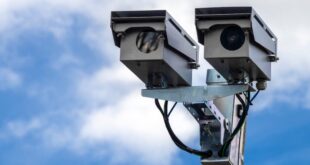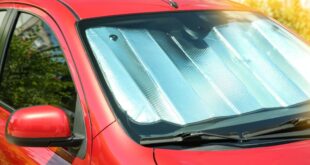As part of Spain’s efforts to make travel safer and more clear, drivers will soon see updated traffic signs.
Credit : FTiare and Shutterstock
Most of us don’t think twice about road signs until they confuse us or, worse, if a fine is delivered to our letterbox.
It’s time for you to look up if driving in Spain. The Directorate-General for Traffic will be updating the roads and signs with updated rules. They’ll also be saying goodbye to the confusing old markers.
You’re not alone if you have ever found yourself staring at a sign, wondering “Hold on, what is that?It’s not just you. Spain’s getting ready for a 21st-century shake-up that could make things clearer for everyone behind the wheel—locals, expats, tourists and even that scooter rider weaving through city traffic.
Why the change? What does it mean to you and how can you avoid getting fined in Spain during this summer? It’s time to break it down into plain English.
Why has Spain changed its road signs?
If you have been driving on Spanish streets in the last few years, you may have noticed that there are more vehicles than just cars. Electric scooters zoom past, cyclists are everywhere and don’t forget about the growing number of foreign registered vehicles and rental cars with drivers that may not be familiar with the local quirks.
DGT’s reasoning for the change is simple: although the world of transportation has changed, the signs have not kept up. It’s not just about updating a few pictures or making things look prettier—this is a push for road safety, clarity, and a little bit of common sense. The new rules are designed to help everyone—whether you’re nipping to the shop on a scooter or driving your family to the coast forl the summer.
In a Nutshell:
- New signs for new vehicles (hello electric scooters and bikes)
- Avoid confusion by providing clearer information
- There are fewer signs that are outdated or duplicates
- Enhanced visibility at night or during bad weather
We can’t deny that clearer signs are a positive thing. With so many of our eyes glued to the screen or distracted by satnavs and phones, it is only logical.
What is changing on Spanish road signs in 2025?
This is where things get interesting, and you may want to pay attention to this before your next trip.
Signs for the modern world: Brand new signs
Spain’s road network will soon be home to new road signs. Some of them have never before been seen. Personal mobility vehicles are given their own signs (think Segways and e-bikes). These gadgets may surprise you if you’re used to the traditional way of driving. Their aim is to keep both them and other road users safe.
Classic signs receive a facelift
Remember the faded or ambiguous signage you used to see, and wondered “Is it still a sign?” Many are getting a design refresh—think sharper icons, bigger text, and more modern, internationally understood symbols. The DGT is trying to prevent the age-old issue of drivers fighting over the meaning of a sign (or pretending to not know it when caught).
No more signs clutter
Do you feel bombarded with signs as you approach an intersection or roundabout? This is also being addressed. The DGT is streamlining information—so instead of two or three signs telling you almost the same thing, you’ll get one, clear instruction. The DGT is streamlining information, so instead of two or three signs telling you almost the same thing, you’ll get one, clear instruction.
What old Spanish road signs are disappearing from the road?
Some signs have simply outlived their usefulness—whether because the law has changed or because the situations they referred to just don’t exist any more. DGT has thrown away these signs so that drivers won’t be distracted by outdated warnings and directions.
It’s nerve-wracking driving at night without having to worry about whether you’re allowed park or if the road is clear. The new signs have been designed to be easily visible in low-light conditions, bad weather and on those hot summer days in Spain when the sun can make it difficult to read.
When will new signs begin appearing?
Relax if you are worried that you will be driving out tomorrow to a country filled with mystery icons. The official rollout date for Spain’s new traffic signs is 1 July 2025—that’s when the changes come into force. Don’t expect all signs to be changed overnight. The update will be gradual over the next few months, as the town halls and councils are given some breathing room.
For a time, the old and new will be mixed together. The goal is to keep roads safe, without wasting council budgets and causing confusion for local drivers.
For those preparing for their Spanish driving tests, the DGT confirms that the new signs are not going to be tested in theory exams immediately. There will be a brief transition period for schools and students to become familiar with the new signs before being tested.
The new road signs in Spain will help you to be informed and stay safe.
Takeaway: In Spain, if you ignore or misunderstand a roadsign, it can result in a fine. This will not change. There’s no change to that.
Stay ahead of the game with these tips
- Check out the DGT site for the latest information or contact your local townhall if you regularly drive in Spain.
- Don’t be shy about asking what a new sign means—locals and police are likely getting used to them too!
- Planned a summer roadtrip? Be sure to read up on any changes, especially if exploring a brand new area or city.
For those who rent cars, use ride-shares, or just visit on holiday, it’s worth a quick Google before you drive—or keep an eye out for new signs and drive a bit more cautiously until you’re confident you know what’s what.
Spanish road sign 2025: The changes will be good for drivers
You’ll see some new shapes and colours when you cruise around Spain over the next months. But ultimately, the DGT’s update is about making roads safer and easier to use for everyone—from the daily commuter to the summer tourist, and every scooter-riding teenager in between.
So next time you’re behind the wheel, keep your eyes open and your mind a bit more curious—you might just spot a sign you’ve never seen before.
What if you are unsure? Slow down, double check, and always remember that a little bit of knowledge (and common sense) can get you a long way on the road.
 Costa News Spain Breaking News | English News in Spain.
Costa News Spain Breaking News | English News in Spain.





